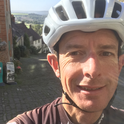Preparing for an all-day cycle ride
Background
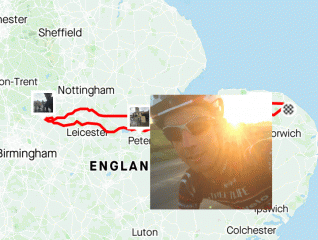
Over the years I've ridden quite a few long rides, but it wasn't until my early 40's that I gradually started increasing my time in the saddle from a few hours to six or more. I distinctly recall my first 200km ride as a bit of an ordeal, but this was really just a mental block, and only a few years later I regard 200km as just a "middle distance". 150 miles is now what I aim for in a day-long ride. (By the way, a big motivation for this is the challenge of increasing my Eddington Number.) My ability to achieve this increase in miles is really just a mental thing; as long as I have the free time to do it, and I get the pace right, I am pretty confident that I can complete the ride. My only problem nowadays is that most of my rides start from home, and I find it difficult to come up with new and interesting routes!
One-day rides really are my thing. I really don't like night riding much, and really like a good night's sleep. Big multi-day audax events like Paris-Brest-Paris just seem to be such an ordeal (despite the clear sense of achievement that completers deserve). So I stick to the single-day challenges. The longest that I've ridden in one day (a 17-hour mid-summer dawn 'til dusk solo ride) is 300 miles, and I've completed a couple of 12-hour time trials, but most of my long rides are 125 - 150 miles long. I prefer to ride at the top end of audax pace (around 18mph) and keep my stops as short and infrequent as possible.
The bike
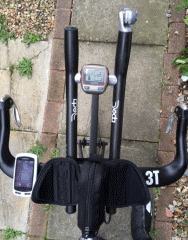
- Be comfortable
- Bike ready
- Carry tools
The most important point is that your bike should be comfortable for you. You need to be in the saddle for a great many hours, so you need to be capable of holding your main riding posture indefinitely.
I've ridden long rides on time trial bikes and road bikes, as I find them both comfortable in their own way. For me the decision really comes down to how much of a "race" the ride is, and whether I'm using the slower and bumpier back lanes. Bumpy roads aren't much fun on a TT bike!
You don't need to carry many tools and spares for a day-long ride. A working pump (check it works!), multi-tool, chain tool, couple of spare tubes and a puncture repair kit should cover it.
Make sure that you've given your bike a thorough check over before a long ride. Check for fraying cables, bits of flint in your tyres, loose bolts, etc.
Clothing
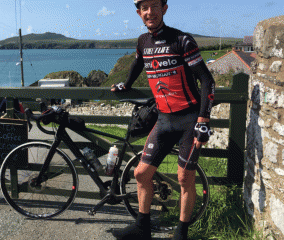
- Layers
- Weather forecast
- Fingers and feet
Wear layers, and carry as little as you need to stay comfortable throughout. This is highly dependent on the weather; a cold, sunny forecast should be treated differently to a warm, damp one. Also be careful to check the conditions throughout your route during the day. Try to get a feel for the most likely movement and severity of any weather systems out there.
Visualise in advance what you will do in certain conditions. If it starts raining in the middle of the day, will it be warm enough for you to carry on in the expectation of drying out later on, or will you prefer to throw on a rain jacket? Will you wear overshoes from the start, even if it'll be too warm for them later on? This all comes down to your comfort preferences, and how much kit you are prepared to carry.
Personally I prefer to wear less and just keep moving to stay warm. For a summer ride (starting at dawn around 8 - 10 deg C, peaking around 20 - 25 deg C) I will wear a short-sleeve base layer, bib shorts, arm warmers and a jersey. I will wear finger-less gloves and won't bother with overshoes - unless there's a good chance of rain later. I'll also take a spare pair of mitts if rain is likely. Cold, wet hands aren't fun! For colder days I'll also cover my knees: leggings if it's likely to remain cold all day; leg warmers if I'll be wanting to remove them later.
Any bits of clothing that you remove can simply be stuffed down your front or in a back pocket. No need for a bulky bag!
My experience of long rides is that my feet and fingers are the bits that react worst. I'm probably not alone in this, either. I find it useful to carry two sets of gloves (eg, full-fingered and fingerless) especially if it's going to rain at some point, as wet gloves will chill the hands worse than the a dry cold wind will. My feet can get too hot and too cold, so I'll only wear overshoes if it's going to be particularly cold or wet. On a hot day my toes can get very painful and I'll be forced to squirt water into my shoes; this doesn't often happen, so is difficult to isolate a preventative measure. I have tried varying my socks (eg, thin or thick) and my insoles, but nothing rules the "hot foot" syndrome out.
Stops and pacing
- Easy start
- Know your limits
- Tortoise or hare?
Pacing is extremely important on a long ride. Experienced riders will be able to go by feel, and not set out too hard or take it too easy. If you're not so good at judging your effort then the ideal tool to use in the modern era is a power meter. People regularly use these for competitive events (especially time trials), but I've found that riding to power on a long ride is extremely useful in avoiding over-exuberance in the first few hours when I'm feeling fresh. A power meters isn't cheap, and it takes time to learn your various power levels, but it can be a useful ally on a long ride.
How accurately you plan your pacing will determine how many stops you need, and how long they'll be. Will you be the tortoise or the hare? Some people prefer to ride almost continuously and at a lower pace, whereas others will push on harder and want to stop much more, eat more and rest for longer. This is very much a matter of personal taste, but will need to be decided in advance. If you're planning on riding in a group, this is especially important to discuss as it will inevitably involve compromises.
Your frequency of stops will of course affect how much food and drink you carry, and there's a trade-off there. The more you carry, the slower you'll go - but the fewer stops you'll need to make.
Route plotting
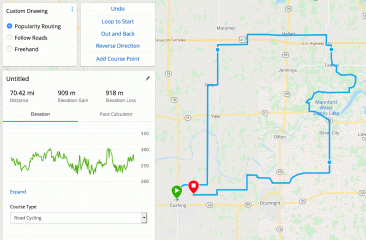
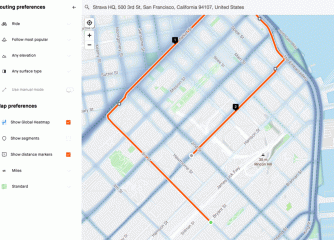
- Give-ways and road conditions
- Paper or computer?
- Top tube route plan
It's important to plan your route with care, so that you're on roads that you're comfortable with and aren't wasting too much time stopping at junctions. Look for those long, older roads that aren't necessarily main roads any more but don't give way much either.
Routes are much easier to design nowadays thanks to the advent of online mapping. I use both Garmin Connect and Strava Routes, although the latter's option of popularity routing (by following routes that are well-used according to actual Strava activities) makes it my favoured option. Garmin Connect also slows down considerably when the route goes much over 100 miles, and dragging a point on a 150-mile route can take up to ten seconds to update. (This appears to be the fault of updating the elevation profile, as things suddenly come back to life as soon as that is updated.)
Nutrition
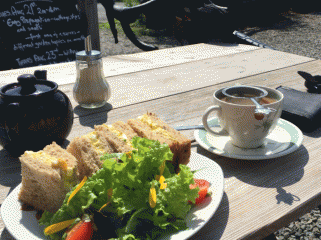
- Remember to drink
- Not too much food, but not too little
- Treat yourself!
Everyone's nutritional needs are different, and anything I say here should only be regarded as what works for me. I think that I'm a fairly "efficient" rider in terms of calorie burn, so am good at building up an energy deficit on long distance rides. The main thing to keep ingesting is water and electrolytes, but even these need to be taken in moderation. It really is an individual thing, but I think that most people over-eat on long rides and suffer in the process because their body is spending so much effort in digesting all this food. The body is packed with energy stores (especially the slow-burn type most needed for endurance activity), so just make sure that you're not getting thirsty and you should be ok with light snacking throughout the ride.
I don't always take the light snacking approach. Sometimes I'll stop mid-way and have a fairly large takeaway or something, and will then quite happily carry on - feeling nicely rested for the 20-odd minutes rest as well.
It's maybe not surprising how much difference a hot drink can make. I can stop for a takeaway coffee, but that might take ten minutes to drink, so what I prefer is to take a thermos flask with me (the mini size that fits in a bottle cage) and refill that every 80 miles or so. Sipping a hot drink whilst on the move can really be quite invigorating, especially when deep into a long ride!
Contingencies
- Identify the likely problems
- Not the kitchen sink!
- Know where to get help
There are many ways for things to go wrong, some more likely than others. Try to cover the worst-case scenarios, in which you will need to call someone for help. So, bring your phone (fully charged), and maybe bring a backup battery and charge cable too.
It is tempting to try and be completely independent by carrying all sorts of spare parts, tools and clothing for every eventuality (such as spare spokes, chain and even a spare tyre) - but these are extremely unlikely to be needed. For multi-day rides in the wilderness then you should certainly consider these things, but not for one-day rides where shops and humanity in general are never that far away.
It does help to know where the bike shops are on your route, so that you can quickly decide which way to head if you hit a significant problem.
In conclusion
Most importantly, stick to what works for you. A day-long ride when you're a long way from home isn't the place to be experimenting with a new bike configurations or food, for example. It's great to try out something new, but save this for a series of short rides where you can tweak and optimise each time.
Comments
It's quiet in here...Add your commentGet more out of your power meter!Free sign-up now
Calendar
All Cycling events | All events

